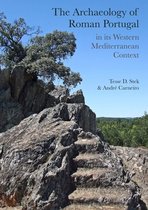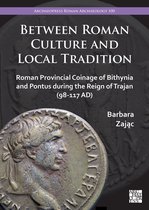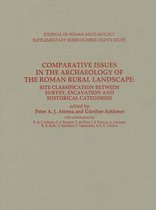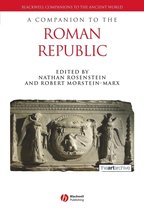The Archaeology of Peasantry in Roman Spain
Afbeeldingen
Sla de afbeeldingen overArtikel vergelijken
- Engels
- Hardcover
- 9783110757200
- 31 januari 2022
- 307 pagina's
Samenvatting
This volume aims to present an updated portrait of the Roman countryside in Roman Spain by the comparison of different theoretical orientations and methodological strategies including the discussion of textual and iconographic sources and the analysis of the faunal remains. The archaeology of rural areas of the Roman world has traditionally been focused on the study of villae, both as an architectural model of Roman otium and as the central core of an economic system based on the extensive agricultural exploitation of latifundia. The assimilation of most rural settlements in provincial areas of the Roman Empire with the villa model implies the acceptance of specific ideas, such as the generalization of the slave mode of production, the rupture of the productive capacity of Late Iron Age communities, or the reduction in importance of free peasant labor in the Roman economy of most rural areas. However, in recent decades, as a consequence of the generalized extension of preventive or emergency archaeology and survey projects in most areas of the ancient territories of the Roman Empire, this traditional conception of the Roman countryside articulated around monumental villae is undergoing a thorough revision. New research projects are changing our current perception of the countryside of most parts of the Roman provincial world by assessing the importance of different types of rural settlements. In the last years, we have witnessed the publication of archaeological reports on the excavation of thousands of small rural sites, farms, farmsteads, enclosures, rural agglomerations of diverse nature, etc. One of the main consequences of all this research activity is a vigorous discussion of the paradigm of the slave mode of production as the basis of Roman rural economies in many provincial areas. A similar change in the paradigm is taking place, with some delay, in the archaeology of Roman Spain. After decades of preventive/emergency interventions there is a considerable quantity of unpublished data on this kind of rural settlements. However, unlike the cases of Roman Britain or Gallia Comata, no synthesis or national projects are undertaking the task of systematizing all these data. With the intention of addressing this current situation the present volume discusses the results and methodological strategies of different projects studying peasant settlements in several regions of Roman Spain.
Productspecificaties
Wij vonden geen specificaties voor jouw zoekopdracht '{SEARCH}'.
Inhoud
- Taal
- en
- Bindwijze
- Hardcover
- Oorspronkelijke releasedatum
- 31 januari 2022
- Aantal pagina's
- 307
Betrokkenen
- Hoofdredacteur
- Jesus Bermejo Tirado
- Tweede Redacteur
- Ignasi Grau Mira
- Hoofduitgeverij
- De Gruyter
Overige kenmerken
- Product breedte
- 170 mm
- Product lengte
- 240 mm
- Studieboek
- Nee
- Verpakking breedte
- 170 mm
- Verpakking hoogte
- 240 mm
- Verpakking lengte
- 240 mm
- Verpakkingsgewicht
- 887 g
EAN
- EAN
- 9783110757200
Je vindt dit artikel in
- Categorieën
- Taal
- Engels
- Boek, ebook of luisterboek?
- Boek
- Beschikbaarheid
- Leverbaar
- Studieboek of algemeen
- Algemene boeken
Kies gewenste uitvoering
Bindwijze
: Hardcover
Prijsinformatie en bestellen
De prijs van dit product is 91 euro en 99 cent.
2 - 3 weken
Verkoop door bol
- Prijs inclusief verzendkosten, verstuurd door bol
- Ophalen bij een bol afhaalpunt mogelijk
- 30 dagen bedenktijd en gratis retourneren
- Dag en nacht klantenservice
Rapporteer dit artikel
Je wilt melding doen van illegale inhoud over dit artikel:
- Ik wil melding doen als klant
- Ik wil melding doen als autoriteit of trusted flagger
- Ik wil melding doen als partner
- Ik wil melding doen als merkhouder
Geen klant, autoriteit, trusted flagger, merkhouder of partner? Gebruik dan onderstaande link om melding te doen.








